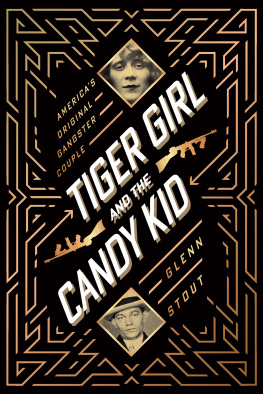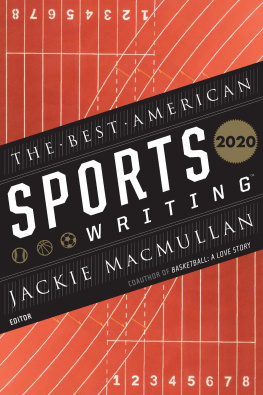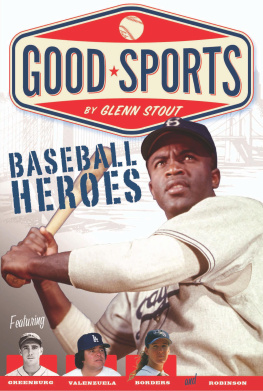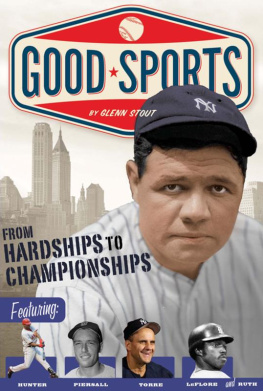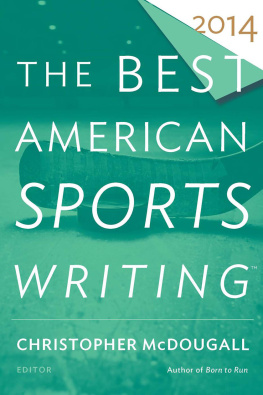
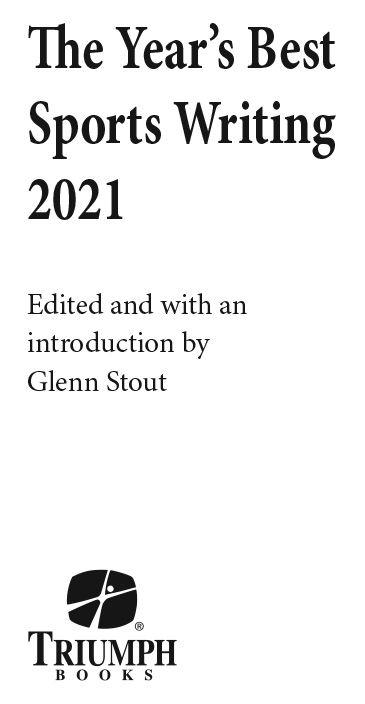
Contents
Allison Glock from espnW
Kim Cross From Bicycling
Jay Martel From The New Yorker
Ross Gay and Noah Davis From The Sun
Wright Thompson From ESPN
Jayson Stark From The Athletic
Maggie Mertens From The Atlantic
Michael Graff From Axios Charlotte
Taylor Rooks From GQ
Louisa Thomas From The New Yorker
Ryan M c Gee From ESPN
Mitchell S. Jackson From Runners World
Brian Phillips From The Ringer
Mike Sielski From The Philadelphia Inquirer
Kent Babb From The Washington Post
Tom Verducci From Sports Illustrated
Joon Lee From ESPN
Ashley Stimpson From Longreads
Nicholas Thompson From WIRED
Zeke Faux From Bloomberg Businessweek
Cary Clack From Truly * Adventurous
Peter Bromka From Medium
Devin Kelly From Longreads
Chuck Culpepper From The Washington Post
A.C. Shilton From Bicycling
Introduction
No one saw this coming.
It seems as if every time we think weve seen it all in the arena of sports there is always a surprise, but I dont think anything quite prepared us for the events of 2020.
As I write this we are barely a year removed since the word COVID entered our common lexicon. I remember thinking, upon first hearing of the emerging pandemic, that this could be bad. How bad? I recall telling someone it will be June or July till things get back to normal.
I was only off by about a year, more or less.
It was no accident that sports played a role in first underscoring the scope of the pandemic, first represented by the NBAs Rudy Goberts unfortunate mocking of the severity of the virus on March 9 when he famously made sure to touch all the microphones at a press conference only to come down with the virus himself a few days later. Soon, the NBA and nearly every other sports league suspended operations.
Entirely by accident, it was because sports are so ubiquitous in our society that it was through sports that most Americans and Canadians became aware of the severity and potential danger that COVID posed. The result, as we now recognize, was that virtually all sports activities of any kind took place for the remainder of the calendar year and beyondwhen they took place at allunder the specter of the virus.
But thats not all that happened.
In what, by any measure, is certainly the most unique year in the history of sports this century, if not the last one as well, COVID disrupted almost everything. We also had to confront a long overdue racial reckoning, a recession, and civil unrest in a toxic political climate. Tragedies like the death of Kobe Bryant were swept away and recent championship celebrations almost forgotten. At a time when some expected sports, as it continued, albeit haltingly, to provide a kind of escape from grimmer realities, that really didnt happen. In a sense, perhaps never before has sportsat least the commercialized, institutionalized, athlete-as-commodity kind of sportsseemed to matter so little. Compared to the time before COVID, fans and athletes alike were forced to reconsider their relationship to the games.
It just didnt feel or look the same without fans in the stands, with seasons cancelled, suspended and then resumed, NFL games played mid-week, and a host of other disruptions. Far from being an escape or respite from reality, in many ways sports made reality more present. For every fan that turned to the games for solace, others turned away, finding the intrusion of reality too uncomfortable to bear. Super Bowl ratings were the lowest since 1969. Ratings for the 2020 NBA playoffs were down 37% compared to 2019; the NHL (38%), MLB (40%), and college football (30%) suffered similar drops. ESPN even began airing cornhole competitions, cherry-pit spitting , and lawn mower racing , the kind of sports the network would have never considered even in its nascent days.
Professional and most other institutionalized sports, in just about every way possible, played truncated schedules and operated in ways that, in the future, will result in very large asterisks placed next to every champion. Who, really, was the best at anything in 2020? Well never really know.
Writers, or course, were no less affected. Those who covered sports for a living found themselves watching video feeds or sequestered in the nether regions of arenas and ballparks, with access to the athletes themselves, with few exceptions, nearly non-existent. Print publications and digital outlets pared back considerably if they managed to stay in business at all. The freelance market dried up almost entirely (even, if were playing the ratings game, as book buying increased by 8%). Those of us who imagined that their careers had reached a place of stability were reminded, yet again, that the only constant is change. All of us, in ways large and small, were forced to adapt.
Fortunately, however, sports have never been the sole province of the leagues, associations, and their related acronyms. Those have never been more than the bottom of a very big funnel that shuffles and sorts and spits out athletes and sports for our mass consumption. Yet sports itself, the actual games and competition that pit one human being tested against another, or even against themselves, still took place. The venues may have been less visible, even so personal as to be solitary, but it is there that the value of sports during such a time was revealed. Maybe the myopic focus only on wins and losses, on beating the other guy , finally began to run its course, and some of the older, more essential but recently considered less valuable traits of sports began to re-emerge. The mere act of survival, of perseverance, or somehow still managing to join with others in any kind of shared activity suddenly seemed important again. I didnt miss playing baseball or watching it nearly as much as I did not being able to play catch. And if basketball didnt take place in an arena before thousands of fans, there remained, somewhere and someplace, a ball being dribbled and bounced off a backboard and games of HORSE played on opposite ends of the court, even if no one was watching. And to those who indulged in lone pursuits, finding competition only with the imagination, sports continued to play an essential role and helped us go on.
I think in this, the strangest of seasons, we can give some credit to the writers for showing how sports continued, and what roles it survived to play. While some writers struggled to provide content, throw-away filler as fungible as the age, the situation pushed others to reach elsewhere, into the more hidden places of our hearts where we find value in what we do. Ive long argued that despite the various strains and struggle writers may face in a business that, in many ways, makes no sense, that despite all the obstacles placed in their way, they nonetheless continue to produce work that is vital, proving their value again and again.
This book is evidence of that, and 2020 was no exception. As the prospects for this volume began to take shape, others may have wondered what would become of sports writing during this time and whether it would even be worthwhile to put together such a collectionI never did. I knew that despite everythingin fact, because of everything , that the writers that aspire to write about sports and perhaps appear in a book such as this would meet the challenge. They would penetrate our uncertainty and ambiguity and somehow translate our collective anxieties and fears to locate that solid center that still remained, the core that makes us all still care.


